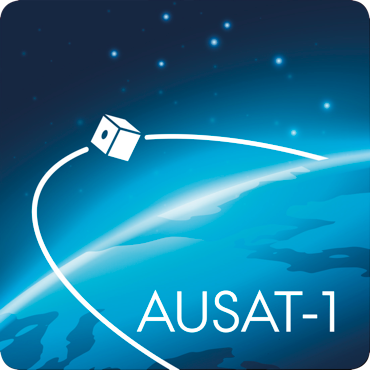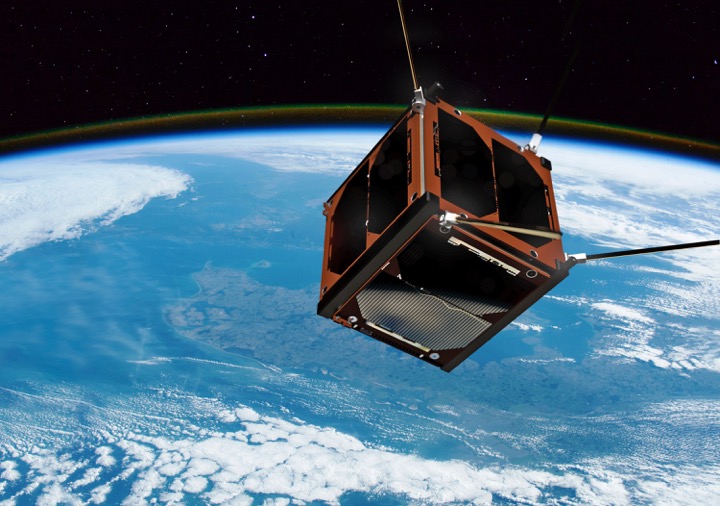Aarhus University is getting its own space programme
The first Aarhus satellite will provide both students and scientists with an opportunity for a new approach to research via satellites in a new collaboration with the Danish space company GomSpace A/S. The project’s core mission is to study the way nanosatellites can be used to carry out scientific investigations. The satellite is called Delphini-1, and it is funded by the Aarhus University Research Foundation.


They are small. They are relatively inexpensive. They are ‘easy’ and quick to build, and they hold the potential to include space in the research and teaching carried out at Aarhus University. It has been shown in many cases that satellites weighing a ton are not required for researchers to achieve the results they would like.
The new collaboration means that space is now also within reach of Aarhus via nanosatellites. These are becoming more and more popular all over the world because they make the sky more accessible and provide researchers with considerable flexibility.
Aarhus University has entered into collaboration with one of the leading space companies in Denmark – and indeed the world. It is thus entering into a new phase, where Delphini-1 will perform scientific tasks for the university’s researchers and students.
The use of data from space missions is an integrated part of research and education at a number of departments at Aarhus University. In astrophysics, for example, NASA’s Kepler satellite has provided data leading to some of the spectacular discoveries in recent years regarding stellar physics and the multitude of exoplanets found out there surrounding distant stars.
To date, there has not been a space mission in Denmark using nanosatellites for scientific purposes, but this is about to change.
“Nanosatellites provide new opportunities for teaching and research in Denmark. This type of application will make working with the technology and planning missions like this one more accessible to students. As early as the first mission here, we’ll gather data about the world and the universe,” says Professor Hans Kjeldsen, Stellar Astrophysics Centre, Aarhus University, who is the scientific director of the mission.
AUSAT: new space missions can start here
The small satellites can be launched relatively easily compared with more conventional missions, and they can be developed in synergy with a number of research branches. This could be the search for distant and unknown worlds, or something closer to home, where it is possible to carry out geological and geophysical studies and develop new forms of telecommunications.
Delphini-1 is a CubeSat spacecraft – a cube measuring 10x10x10 cm and weighing just over 1 kg. It is being built in collaboration between the Department of Engineering, the Department of Physics and Astronomy, and the Department of Geoscience, as well as GomSpace A/S, a company in North Jutland that specialises in this type of technology.
‘AUSAT to ground control’
The components for the first Aarhus satellite will arrive on campus in spring 2017. Here they will be included in a teaching programme with physics, geoscience and engineering students. They will be educated in space technology, and will personally assemble a ‘viable’ satellite that will be in orbit for about four months according to plan. While in orbit, Delphini-1 will collect data that will show the partners in the satellite programme how their scientific work can be planned in future. The students will also be responsible for communication with Delphini-1 from the control station located at Aarhus University.
The aim of the first mission is that Aarhus University and GomSpace acquire valuable knowledge about the satellite’s functionality. Delphini-1 will collect data, and the focal point of the first mission is to demonstrate that this type of space mission can create the knowledge wanted by the researchers. “With Delphini-1, Aarhus University will study whether nanosatellites can be used for purposes such as observations of the atmosphere,” says Associate Professor Christoffer Karoff, Department of Geoscience.
“We’ll particularly study whether existing radio equipment can be used to create new forms of rapid data transmission from these small satellites, so the researchers can download images from the satellite as soon as they have been recorded,” adds Associate Professor Rune Hylsberg Jacobsen, Department of Engineering.
“We’d eventually like to design instruments and set up an Aarhus University space centre that has scientific relevance and professional gravity for the education of our students,” says Project Scientist Victoria Antoci, Stellar Astrophysics Centre, Aarhus University, who is the operational director of the new project.
Once the satellite has been built and thoroughly tested, a couple of Aarhus University students will transport it by hand to Houston in a specially built suitcase. The launch will take place in two steps. Delphini-1 will first be sent to the International Space Station (ISS) by cargo space vessel and, in the first quarter of 2018, it will be launched in its own orbit from ISS.
The satellite will be equipped with a camera for observations of the sky and Earth, as well as telecommunications equipment that will transmit collected data to Aarhus and make it possible to communicate with Delphini-1 during the mission. A control room will be built at the university, from which the students and researchers will be able to communicate directly with the satellite.
“The ground station is an important hub for the entire project, and it will be located on campus here in Aarhus,” explains Victoria Antoci. “We’re paving the way to establishing a new type of scientific space mission here in Denmark together with a strong business partner. This will be closely linked to our teaching of future engineers and researchers. We have an exciting time ahead,” she concludes.
The satellite is called Delphini-1, and it is funded mainly by the Aarhus University Research Foundation. The European Space Agency, ESA has offered Aarhus University a free launch. This is done due to the Danish membership of ESA and our participation in the International Space Station programme via the Danish Ministry of Higher Education and Science.
Read more about the AUSAT project here.
For more information, please contact
Professor Hans Kjeldsen
Stellar Astrophysics Centre
Aarhus University
Mobile: +45 2338 2160
hans@phys.au.dk
Postdoctoral Fellow Victoria Antoci
Department of Physics and Astronomy
Aarhus University
+45 8715 5635 (English-speaking)
antoci@phys.au.dk
Associate Professor Christoffer Karoff
Department of Geoscience
Aarhus University
+45 2118 3926
karoff@phys.au.dk
Associate Professor Rune Hylsberg Jacobsen
Department of Engineering
Aarhus University
+45 4189 3252
rhj@eng.au.dk
